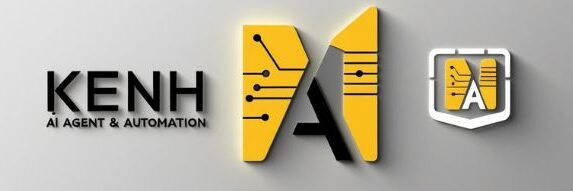Understanding the Role of MCP in Language Models
The evolution of language models has reached a pivotal turning point.
While models like GPT-4.5, Claude AI, and AutoGPT continue to dazzle with capabilities, the real game-changer in 2025 is something behind the scenes: MCP — the Multi-agent Collaborative Process framework.
MCP isn’t a model — it’s a method. A structure. A system.
And it’s changing how AI agents collaborate, reason, and deliver value.
In this deep-dive, you’ll learn what MCP is, how it connects language models, and why it powers the next wave of intelligent AI agents.
1. What Is MCP?
MCP = Multi-agent Collaborative Process
At its core, MCP is a framework for orchestrating multiple AI agents, each with a specialized role, to collaborate toward a shared goal.
Think of it like an AI production line:
Planner agent decides what to do
Research agent gathers information
Writer agent (language model) generates content
QA agent reviews for consistency
Scheduler agent automates deployment
Each agent runs autonomously — but under shared logic and communication.
How It Differs from Single-Agent AI
| Feature | Single-Agent | MCP Framework |
|---|---|---|
| Structure | Linear | Modular + parallel |
| Task handling | One model does all | Specialized agents collaborate |
| Scalability | Limited | Highly scalable via role-based delegation |
| Flexibility | Prompt-dependent | Dynamic + logic-driven |
2. Why Language Models Need MCP
Language models like GPT-4.5 or Claude AI are powerful — but not perfect:
They have limited long-term memory
They follow prompts linearly
They don’t adapt easily across tasks without re-prompting
MCP solves this.
By creating agent systems around LMs, you:
✅ Break complex tasks into micro-roles
✅ Use different models for different jobs (e.g., Claude for reasoning, GPT for content)
✅ Create persistent workflows — like full-time AI staff
✅ Automate feedback loops, evaluation, and scheduling
In short: MCP gives structure to intelligence.
3. Real Example: Claude + GPT-4.5 + AutoGPT via MCP
Let’s look at a sample AI content production agent:
Objective: Publish 3 SEO blog posts weekly
Agent Roles:
| Role | Tool | Function |
|---|---|---|
| Planner Agent | AutoGPT | Determines blog topics from trending keywords |
| Research Agent | Claude AI | Summarizes top 5 sources per topic |
| Writer Agent | GPT-4.5 | Writes 1000–1200 word articles |
| QA Agent | GPT-4.5 | Checks grammar, tone, SEO compliance |
| Scheduler Agent | AutoGPT | Posts to WordPress + social |
All of this can run semi-autonomously using no-code platforms like MagicLight.
4. The Architecture: How MCP Works Internally
An MCP system uses:
✅ Memory
Agents share context via centralized or distributed memory (Notion, Pinecone, Redis)
✅ Message Passing
Agents communicate using tasks, prompts, and responses. Example:
{
"task": "Summarize the latest AI news",
"from": "PlannerAgent",
"to": "ClaudeAgent"
}
✅ Feedback Loops
Outputs from one agent are reviewed, enhanced, or passed on. Example:
Writer Agent generates
QA Agent critiques
Writer re-drafts
Scheduler publishes
✅ Triggers
Set by schedule, data input, or external signal (e.g. Google Trends, email event)
5. Language Models that Excel Inside MCP
| Model | Strength | MCP Role |
|---|---|---|
| Claude AI | Summarization, planning, chain-of-thought reasoning | Researcher, Strategist |
| GPT-4.5 | Content generation, storytelling, refinement | Writer, QA |
| AutoGPT | Logic execution, task chaining | Planner, Scheduler |
| Gemini/Mistral | Fast-response tasks | Assistant, Formatter |
The future isn’t about “which model is better”—it’s about how they work together in an agentic system.
6. Benefits of MCP in Real-World AI Use
✅ Higher Output
You can produce more with less effort by parallelizing roles.
✅ More Accurate Results
By assigning Claude AI to analyze and GPT to generate, you use their strengths optimally.
✅ Self-Correction
Agents can check each other’s output using critical review chains.
✅ Scalable Across Teams
Replicate your workflows for content, sales, research, support—each with its own MCP stack.
7. How to Build an MCP System (No-Code)
Platforms like MagicLight now let you build MCP-style agents using a visual interface.
How It Works:
Create agents with specific goals
Assign models: Claude, GPT-4.5, AutoGPT
Connect memory (e.g., Notion or Pinecone)
Add trigger rules (e.g., “Run every Monday”)
Define handoffs between agents
Test, refine, and automate
8. Use Cases for MCP + Language Models
Content Marketing: From idea to SEO article to social sharing
Market Research: News monitoring → Insight reporting
Email Marketing: Writing, QA, and scheduling personalized campaigns
Product Management: Agents monitoring features, user feedback, and Jira tickets
Customer Support: FAQ writing, tone checking, ticket drafting
All powered by structured language model roles.
9. Future Outlook: MCP & AGI
As AI moves toward Artificial General Intelligence (AGI), the MCP framework will serve as the intermediate architecture:
It allows agents to collaborate like human teams
It mirrors cognitive delegation: thinking, writing, editing, acting
It enables error-checking, adaptive memory, and decision loops
AGI may not be a single monolithic model—but a colony of structured agents working as one.
🚀 Want to build your own MCP-powered AI workflow?
Start for free with Claude AI, GPT-4.5, and AutoGPT—all integrated via MagicLight’s no-code platform.
👉 Explore MagicLight now and launch your first intelligent AI agent in minutes.

